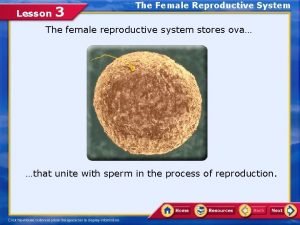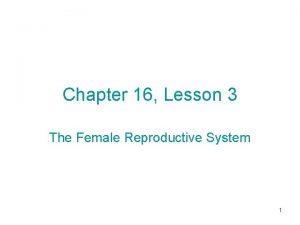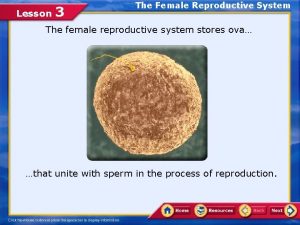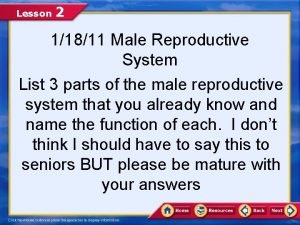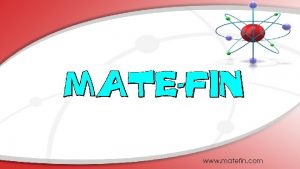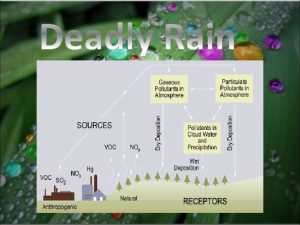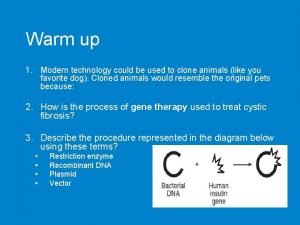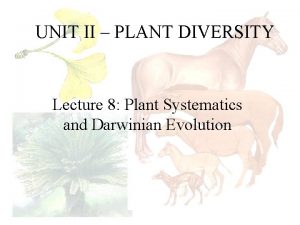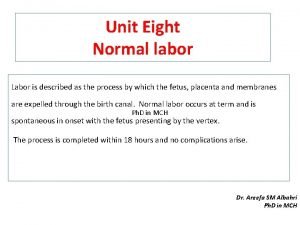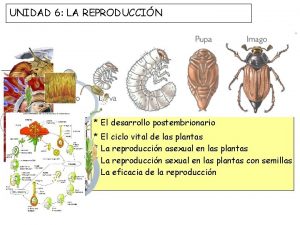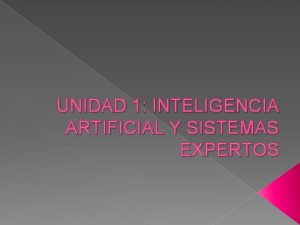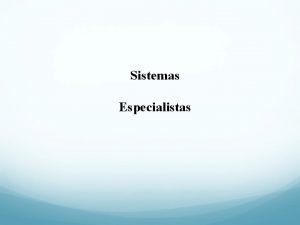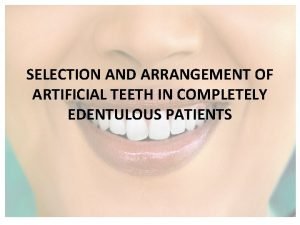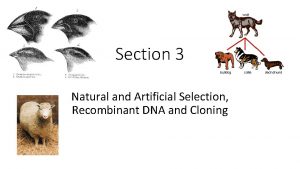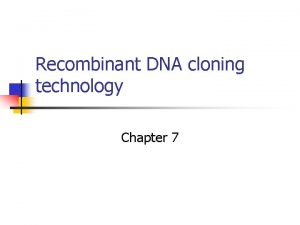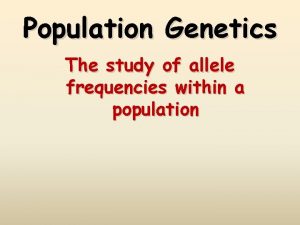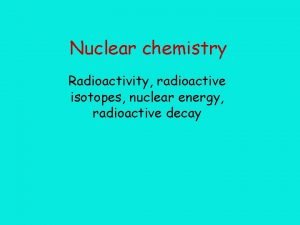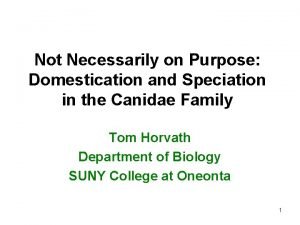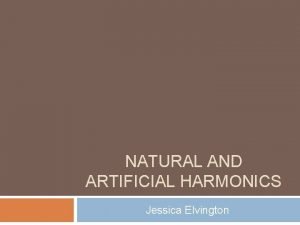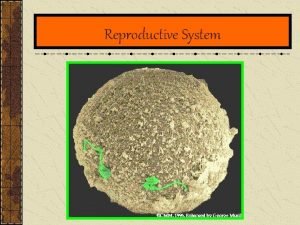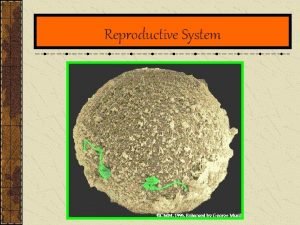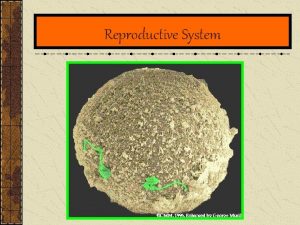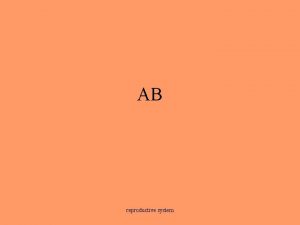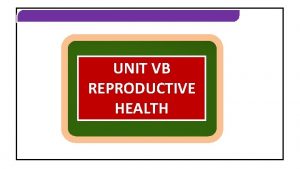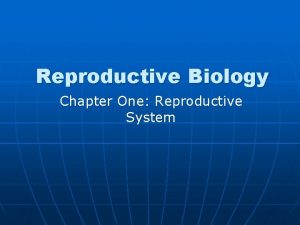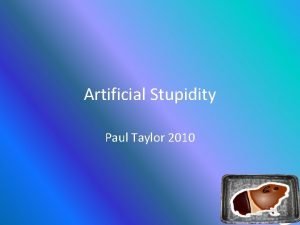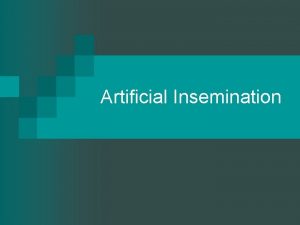Reproductive Technologies Lesson 1 Reproductive Technologies 2 Artificial































- Slides: 31

Reproductive Technologies Lesson 1. Reproductive Technologies 2. Artificial Selection 3. Hybridization 4. Artificial Pollination 5. Artificial Insemination 6. In Vitro Fertilization 7. Cloning 8. Recombinant DNA 9. Concerns

Teach. With. Fergy Preview File Please enjoy this preview of your Student Version of the lesson. I’ve created this PDF for ease of viewing and to decrease the file size but of course, your lesson will be in Power. Point format. - Some slides appear blank because they have been removed. - Student versions have portions of the text removed which is given in the teacher version and appear as ______ - Other slides may have. . . on them, this represents writing that has been removed.

Reproductive Technologies • _____ • Currently: • • • . . . Selective breeding. . . . Artificial insemination • _____ • . . . • Recombinant DNA

Artificial Selection • Choosing individuals with specific traits to reproduce • _____ • . . .

This slide has been removed

Corn has been artificially selected to produce large ears with large kernels

Artificial Selection • Pets • • _____ Cat breeds • • . . . _____ • Common ancestor of all dogs and wolves was a (now-extinct) species of wolf

Hybridization • _____ • . . . • E. g. , Savannah cat, mule, liger, pluot, sweet corn, Leyland cypress

This slide has been removed

Artificial Pollination • • • . . . _____ Can be dusted on or brushed on _____. . .

Artificial Pollination • . . . • Can pollinate same flower (self-pollination) or another flower (cross-pollination) • _____

Artificial Insemination • Sperm collected from male • Collected sperm inserted into female’s uterus

This slide has been removed

In Vitro Fertilization • • . . . _________ Embryo implanted into female’s uterus (either original egg donor or a different female)

In Vitro Fertilization • _____ • • Obtain livestock with desired traits Reproductive limitations in livestock • . . . • Human reproduction: reproductive limitations • _____

Cloning • . . . • Natural and artificial • Three types of artificial cloning • • • _________

This slide has been removed

Cloning • . . . • • Remove fertilized egg _____ Embryos implanted into female Mimics natural formation of identical twins

Cloning • . . . • • _____ Nucleus removed • • • _____ Somatic (body) cell taken from another animal Egg cell (without nucleus) combined with somatic cell (with nucleus)

Cloning • . . . • • Egg cell now has DNA from an existing animal. . . After a few cycles, embryo implanted into female _____

Cloning • . . . • _____ • • Dolly the sheep – 1996 Zhong and Hua the macaques – 2018

This slide has been removed

Cloning • . . . • Drawbacks • Difficult and inefficient • • • Organ defects Large birth weight _____ • • _________ Dolly lived to be only half the normal lifespan of sheep _____

Cloning • . . . • • Cloned embryo grown to provide embryonic stem cells _____ Used to understand treat disease Stem cells are undifferentiated • • _____ Two techniques • • SCNT Induced pluripotent stem cells

This slide has been removed

Cloning • . . . • Replace diseased or damaged tissues/organs • • • _____ . . . Drawbacks • • _____ Sometimes accumulate dangerous mutations after 60 cell division cycles


Recombinant DNA • _____ • Combined DNA placed into another organism • _____ • . . . • Process • • • Isolate (cut out) DNA fragment with desired gene Insert DNA fragment into another organism’s DNA _____

Recombinant DNA • _____ • • . . . E. g. , some vaccines made from viral proteins produced in yeast cells that have been recombined with viral genes

This slide has been removed

Concerns • _____. . . Therapeutic cloning by SCNT requires embryo destruction. . . • • E. g. , “GATTACA” • _____ • Reduced genetic diversity in agricultural products
 Unit 5 lesson 3 the female reproductive system
Unit 5 lesson 3 the female reproductive system Lesson 20.2 the male reproductive system
Lesson 20.2 the male reproductive system Chapter 16 the reproductive system
Chapter 16 the reproductive system Lesson 3 the female reproductive system
Lesson 3 the female reproductive system Unit 6 human development lesson 1 pregnancy
Unit 6 human development lesson 1 pregnancy Lesson 2 the male reproductive system
Lesson 2 the male reproductive system Immigration and urbanization new technologies lesson 4
Immigration and urbanization new technologies lesson 4 Natural and artificial radioactivity
Natural and artificial radioactivity Causes of acid rain
Causes of acid rain Example of physiological adaptation
Example of physiological adaptation The components of expert system
The components of expert system What is an example of artificial selection
What is an example of artificial selection True labour contractions
True labour contractions Natural vs artificial radioactivity
Natural vs artificial radioactivity Que es fecundación externa
Que es fecundación externa Inteligencia artificial sistemas expertos
Inteligencia artificial sistemas expertos Similarities
Similarities State space search ai
State space search ai Expert sinta download
Expert sinta download Dentogenic concept
Dentogenic concept Artificial selection
Artificial selection Searching for solutions in artificial intelligence
Searching for solutions in artificial intelligence 15-780 graduate artificial intelligence
15-780 graduate artificial intelligence Knowledge manipulation in ai
Knowledge manipulation in ai Lambda phage dna
Lambda phage dna What is meta knowledge in artificial intelligence
What is meta knowledge in artificial intelligence Artificial speciation
Artificial speciation Natural and artificial radioactivity
Natural and artificial radioactivity Canidae cladogram
Canidae cladogram Natural selection vs artificial selection
Natural selection vs artificial selection Artificial harmonics guitar
Artificial harmonics guitar Difference between continuous and discontinuous variation
Difference between continuous and discontinuous variation
